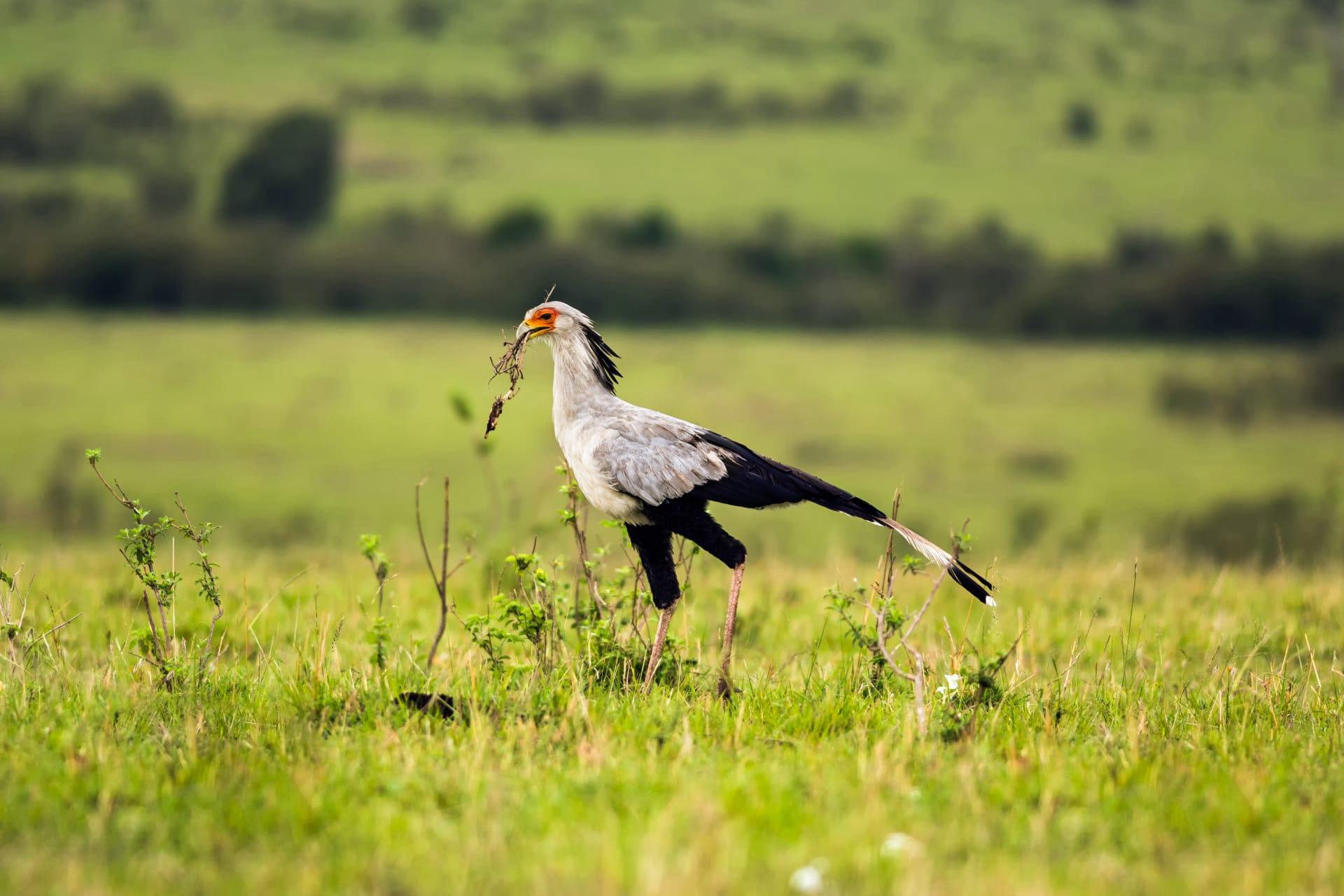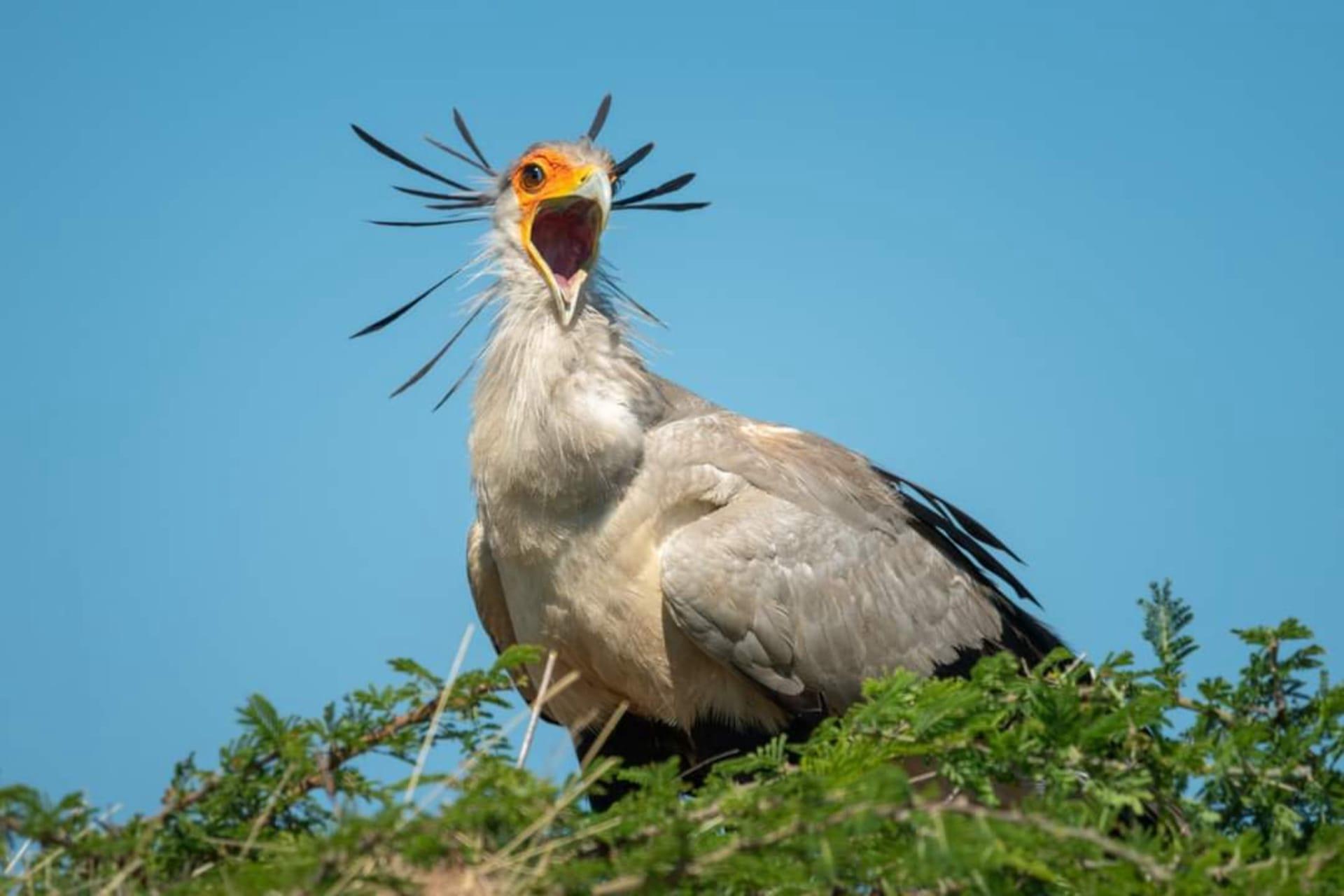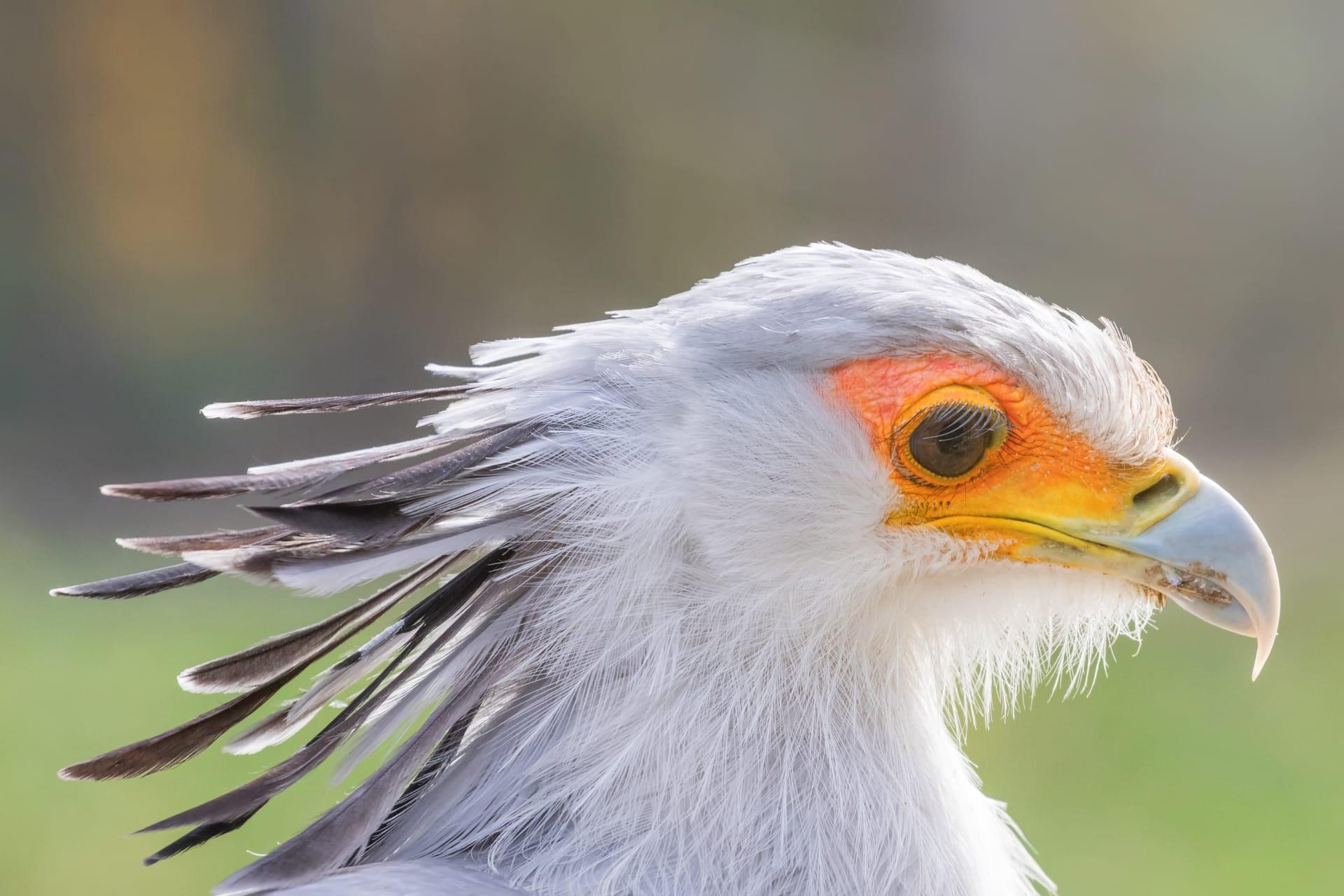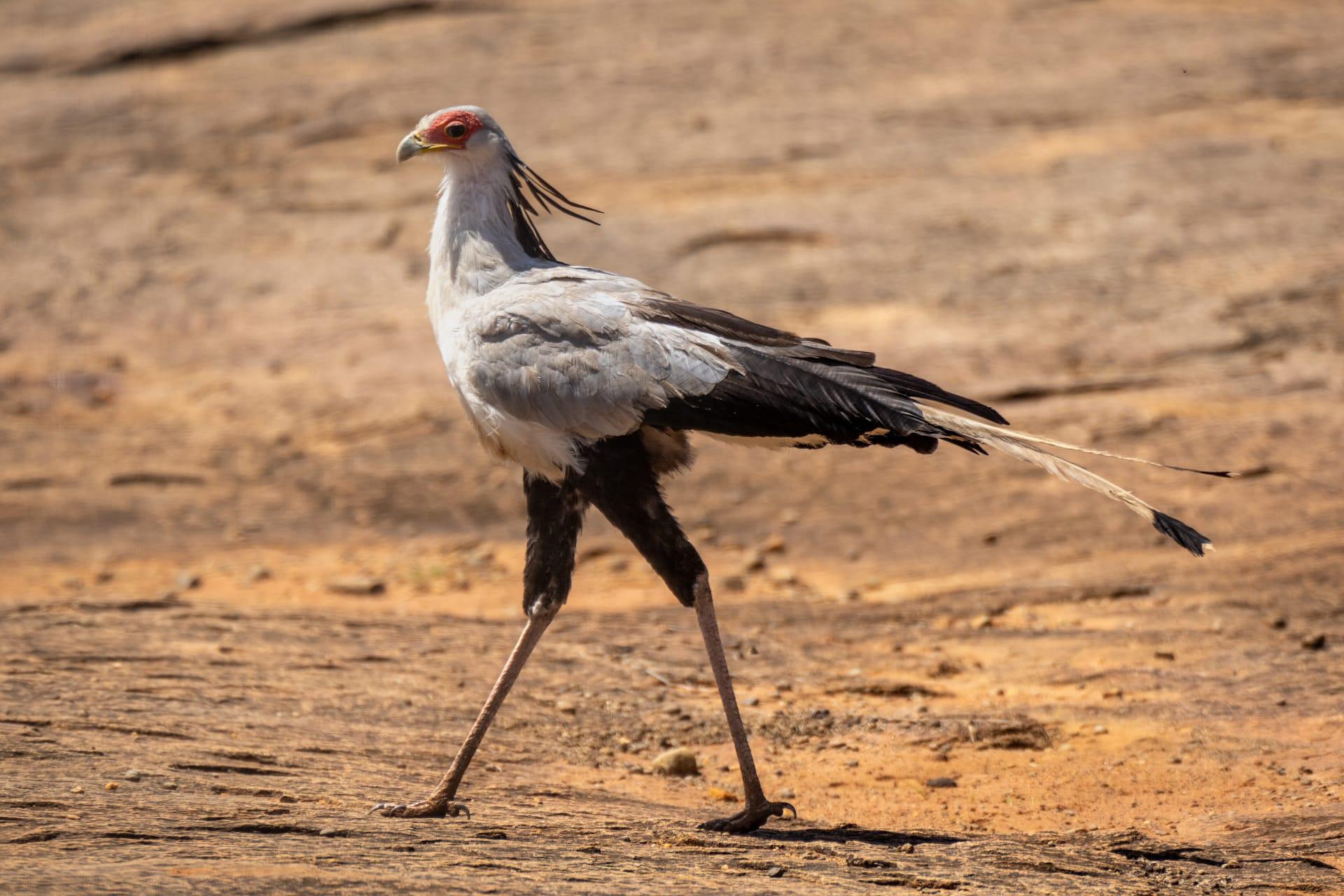Secretary Bird Characteristics
- Home /
- Mini Encyclopedia /
- Animal /
- Secretary Bird Characteristics
1
The Secretary Bird, a unique species native to Africa, stands out with its impressive stature and distinctive appearance. Resembling a blend of a crane and an eagle, it has long, crane-like legs and a raptor-like body. These birds typically reach a height of about 4 feet (1.2 meters), with a wingspan stretching up to 7 feet (2.1 meters). Their long legs, accounting for about half of their height, are not just for show; they play a crucial role in their hunting tactics. As for their lifespan, Secretary Birds can live up to 15 years in the wild, and some in captivity have been known to reach 20 years.
One of the most remarkable organs of the Secretary Bird is its powerful legs. These legs are not just long; they are incredibly strong. They enable the bird to deliver deadly kicks to its prey, which mainly consists of snakes, insects, and small mammals. What makes these legs extraordinary is their ability to exert a force equivalent to five times the bird's body weight in a single stomp. This ability is crucial for the bird's survival, allowing it to kill venomous snakes like cobras effectively. The combination of precision, speed, and power in their legs is a remarkable adaptation for hunting and self-defense.

2
Question: Why does the Secretary Bird have such long legs?
Answer: The long legs of the Secretary Bird are a key adaptation for its survival in the African savannah. These legs serve multiple purposes. Firstly, they provide an elevated vantage point, allowing the bird to spot prey over tall grasses. Secondly, the length and strength of these legs are crucial for hunting. The Secretary Bird uses its legs to deliver powerful kicks, capable of killing or stunning prey, particularly snakes, including venomous ones. The height provided by the long legs also keeps the bird's vital organs at a safe distance from potential bites of dangerous snakes.

3
Secretary Birds are notable for their unique mode of locomotion. They are one of the few birds of prey that hunt on foot. These birds can cover a vast territory, walking up to 20 miles (32 kilometers) a day in search of food. Their long legs facilitate not just walking but also running, allowing them to swiftly close in on their prey or escape threats. Their movement is characterized by graceful, high-stepping strides, which is efficient for covering large distances in the open savannah.
When it comes to hunting, the Secretary Bird employs a remarkable strategy. It locates its prey from a distance, thanks to its elevated height, and then swiftly approaches it. Once close, it uses its powerful legs to deliver deadly kicks. These kicks are precise and forceful, capable of crushing the skull of a snake or a small mammal. The bird’s hunting technique is a blend of patience, precision, and power, making it a formidable predator in its habitat.

4
The Secretary Bird is predominantly found in the open grasslands and savannahs of sub-Saharan Africa. This habitat provides them with the necessary visibility to spot prey from a distance and the space to utilize their unique hunting technique. They avoid dense forests and very arid deserts, preferring areas with a mix of grass and scattered trees. Their presence in a region is often a good indicator of a healthy ecosystem, as they help control populations of pests and snakes.
In terms of reproduction, Secretary Birds are monogamous and are known to mate for life. They build large nests, typically in acacia trees, using sticks and grass. These nests can be up to 8 feet (2.4 meters) in diameter. Breeding season varies depending on the region but generally occurs during the dry season. Females lay two to three eggs, and both parents take part in incubation, which lasts about 45 days. The chicks are altricial, meaning they are born relatively undeveloped and require extensive parental care. They fledge after about 80 days but often stay with their parents for an extended period after that.

5
Book: "Wings of the Sahara: The Secretary Bird's Flight" by Jonathan Green (2010, UK). This book provides an in-depth look into the life of the Secretary Bird, focusing on its unique adaptations and role in the African ecosystem. Green's narrative combines scientific research with captivating field observations, offering readers a comprehensive understanding of this majestic bird.
Book: "Savannah Sentinels: Birds of Prey in Africa" by Emily Richards (2015, USA). While not solely focused on the Secretary Bird, this book offers a broader perspective on birds of prey in Africa, with a significant section dedicated to the Secretary Bird. Richards explores the bird's behavior, hunting techniques, and its symbolic significance in various African cultures, providing a holistic view of its existence in the wild.